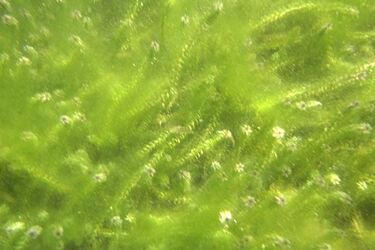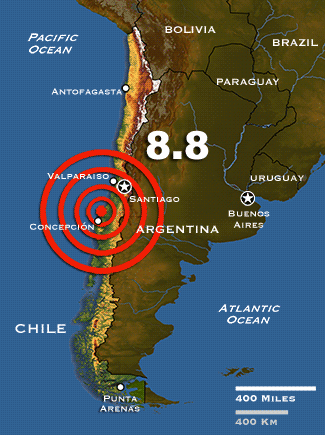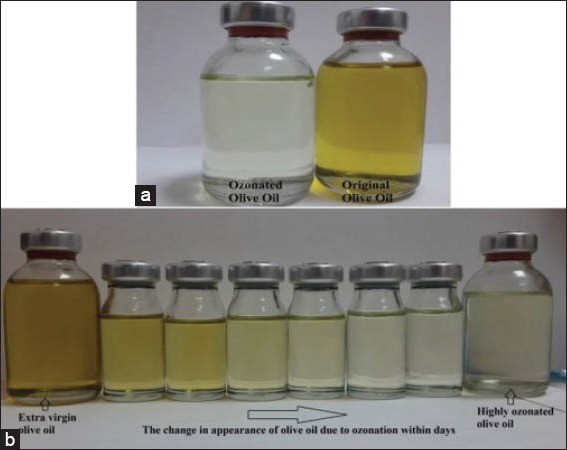A pool ozone generator also called an Ozonator, is a device that emits ozone into pool water in order to filter and clean it. They are generally used in combination with more traditional chemical treatments. There are many benefits to using an Ozonator in comparison with using high levels of harsh chlorine and other chemicals.
Ozone generators work by passing air through high voltages of electricity. This process separates the O2 molecules into separate O1 molecules. These new molecules combine with others to create ozone.
Studies have shown that the use of a pool ozone generator effectively cleans the pool and frees the water of mold, mildew, bacteria, yeasts, and fungi. They are also effective at neutralizing and removing bodily oils and other human contaminants in the water. This helps to reduce the need for other, harsher, purifying methods.
The use of a pool ozone generator usually reduces the need for chemical agents substantially. More effective models are in development that may virtually eliminate the use of harsh chemicals.
In comparison with chlorine, ozone does not irritate the eyes, nose, and mouth. Ozone also leaves the Ph balance of the water untouched and is much less corrosive to a pool liner than chlorine use (check this article).
Using a pool ozone generator also helps to reduce the overall maintenance costs of keeping a pool clean. The Ozonator only has to be purchased once and reduces the use of chemicals, so fewer supplies need to be purchased each season. Additionally, since ozone is not as harsh to pool liners, fewer repairs may be needed.
The ozone generator’s cost may vary based on the size and model being purchased. In most cases, the price spent on the Ozonator is made back by reducing the cost of yearly pool maintenance (the best ozone generators)
Pool owners should keep in mind that a pool ozone generator is used for microscopic organisms and does not take the place of proper pool maintenance. Leaves and other large debris should be removed with a pool net or vacuum unit. Smaller items should be removed with the use of a quality pool filter.
Contact Us now for more information
Does Ozone kill Algae?
Myths about treating Algae with Ozone
A client recently asked me if Ozone can kill algae since he had come across some information that stated otherwise,
I decided to search and view some of the articles that he could have read. I came across an entertaining article that stated in plain English that if you do not inject enough Ozone into the pool, Algae will not be killed! Then comes the conclusion that Ozone does not kill Algae… This was done by a leading Ozone Generator manufacturer, I was appalled. So I completed further research to find that Ozone in fact does kill algae, a 5 mg/l dose will kill the Algae in 5 minutes, and having a residual ozone concentration of 0.05 PPM will keep Algae away from your pool forever.
This is research done by the American Water Works Association Research Foundation.
If an Ozone Generator Manufacturer is not willing to do the research for their “Ozone Handbook” this would lead you to believe that they are not willing to make the extra effort for your Ozone application.
Contact us now and we will gladly help you to select the correct Ozone Generator for your application.
Absolute Ozone Generator Survives Earthquake in Chile
Our representative in Chile built a wastewater treatment plant for a client in Arauco South Chile (very close to the quake epicenter) for a treatment process that was mainly a chemical-physical treatment (DAF) with a secondary treatment as AOP (advance oxidation process) and a reverse osmosis final treatment in order to get 20.000 liters back to process water.
The plant worked greater than expectations for several months until February 27th, 2010 when an 8.8 Magnitude earthquake struck Chile, the WWTP was located 100 meters from the sea coast, and all of the equipment suffered damage from the quake and was then submerged in seawater as the entire plant was flooded by the sea several times.
They lost track of their client, he owed some money at that time, and this was not the main concern at the time, since the client’s health was obviously more important!
The majority of the equipment and components had been stolen by locals and after 8 months the ATLAS 30 was discovered under the remains of the building, filled with sand and had sustained damage on the corner of the enclosure.
Our dealer proceeded to open the unit to check the damages; the electronic circuit board had corrosion from the seawater. They soon decided to do several chemical baths and repair the components. In order to check the performance, all we had to do was switch the ozone cell fan on and the ATLAS 30 worked like brand new!
The ozone cell had no damage since it was connected to the oxygen concentrator from one side and the Venturi Injector on the other side.
With reliability and the ability to take some abuse, Absolute Ozone Generators are the most logical choice for any industrial application. Contact us at (780) 486-3761 for more information. Or by email at Office@AbsoluteOzone.com
See more about the earthquake at http://en.wikipedia.org/wiki/2010_Chile_earthquake
The house of the best performing, most compact, and highest quality Ozone Generators on the market today.
We strive to be on the cutting edge of environmental technology to ensure our clients a successful Ozone application.
Ozonated Olive Oil Treatment With Ozone Generators
How to Ozonate Olive Oil, and Traditional Uses
Introduction
Shortly after patenting his first ozone generator, Nikola Tesla ( in 1900 ) began marketing an ozonated olive oil to medical doctors. Nikola Tesla created his ozonated oil by bubbling ozone through pure olive oil in the presence of a magnetic field for eight weeks. By 1904, ozonated olive oil, also known as Glycozone, began appearing in medical literature, such as “The Medical Uses of Hydrozone and Glycozone”, 9th Edition, by New York Chemist Charles Marchland.
Ozone, as a very reactive gas, is difficult to stabilize for long periods of time in a usable form. However, by bubbling ozone through an ozone-resistant container ( such as a glass container ), the ozone gas is trapped and begins to react with the oil.
In essence, It is a catalytic reaction that actually burns the olive oil. One of the resultant compounds is C10H18O3, with a hydrogen and carbon complex. Some of the terpene gas remains trapped within the oil, and some are released into the environment.
While some people may believe that fully ozonated olive oil is an ozone carrier, the oxygen is actually bound and released as a peroxide ( O-O-H bond ). Ozonated olive oil will hold actual ozone gas for a limited amount of time but in its “free form” state.
How should olive oil be ozonated for?
The average time, depending on the type of ozone generator one is using, is about 3 weeks. Once olive oil is completely ozonated, it will actually turn into a nearly clear, gel substance. The smell of ozone being emitted from olive oil will be noticeable. The final product must be kept refrigerated at all times.
Ozonated oil is actually created by a redox reaction. The ozone literally burns the oil, and three primaries and organic peroxides are actually created throughout the entire process. In other words, the first peroxide created reacts a second time to produce a second peroxide, and then finally once again to form C10H18O3. The final process is quite noticeable as the entire substance will turn into white foam. Once this white foam settles, ozonating any further is pointless, as the original oil is no longer present, and the compounds have been taken to a state that no longer reacts with ozone.
According to research conducted by Hulda Clark, ozonated olive oil may be utilized anywhere from as little as 20 minutes to 12 hours of ozonation. Clark recommends the use of partially ozonated olive oil for internal use, as a part of a liver cleansing program, and in order to remove PCBs from the body ( by taking 2 tablespoons of partially ozonated olive oil three times a day for 2-3 weeks ).
Partially ozonated olive oil maintains the properties and characteristics of olive oil, prized as a fantastic skin conditioner. Since the ozone within the olive oil is still reacting, using partially ozonated olive oil may provide an additional stimulating effect on the skin, and such a formulation, if used shortly after ozonation, makes an excellent general skin conditioner.
However, please keep in mind that partially ozonated olive oil does not compare with fully ozonated olive oil for true therapeutic purposes.
Further Notes and Tips on Using Ozonated Olive Oil
Ozonated oil, or even partially ozonated oil, makes one of the most excellent facial skin conditioners available at any price. However, the application must be done properly to avoid problems.
Apply the oil to the face very liberally, being certain to massage deeply. Use enough oil to coat the skin, so that the pores are completely insulated. Allow the oil to remain on the skin for about twenty minutes. Then, using a paper towel, remove all of the excess oil on the surface of the skin. Failure to remove the surface oil may eventually cause skin problems.
Contact Us now with your opinion about the above article, and if you require more information on the subject or technical assistance with sizing an Ozone system
Is your Ozone Generator up to the job?
Here’s where a customer could have used better information
After over a decade of building and supplying many ozone generators for water treatment all over the world, I noticed that we hardly sell anything locally.
It seemed strange to me, so I decided to call several different local water treatment professionals to find out what was the reason behind this
I asked them if they had ever used an ozone generator for water treatment. To my surprise, all of them answered yes. I then asked them if they are now using ozone in their applications. To my astonishment, all of them answered no. I asked them why.
“Because ozone doesn’t work,” was the answer from all.
This was the equivalent of someone telling me that the world is flat. Ozone for water treatment had always been an excellent choice for all our clients — effective, reliable, relatively inexpensive, and ecologically clean.
I decided to ask one of the people I had approached — let’s call him “Joe” — to explain to me why an ozone generator didn’t work for him and why he is so dead-set against using ozone.
One customer’s nightmare
Joe told me that a few years ago he had installed an ozone generator for his customer’s 100-cubic meter (26,400-gallon) residential swimming pool. It was an air-fed, air-cooled ozone generator, purchased from one of the largest ozone generator manufacturers in North America. He was told it would produce enough ozone to completely disinfect the pool.
To his disappointment, the ozone generator did not do the job. The pool water turned cloudy and after a few days, it started to smell.
In the end, he had to install a supplementary chlorine injection system, which rectified the problem for about eight months.
Then he got another call from the customer, telling him the water was not as good as it used to be. When he checked, the ozone generator was not working. He had to take it apart and scrape the buildup off the electrodes. One of the electrodes cracked, and he had to order a new one from the manufacturer.
In summary, it was a nightmare scenario, which no one really needs. It was why he was not touching another ozone generator again, and Joe also told me some of his friends in the business had had similar experiences.
Looking at the numbers
I took out my calculator and started to check what might have gone wrong at Joe’s customer pool. Follow my steps:
1) 1 cubic meter (m³) = 1 million grams (g) of water
2) 1 g ozone dissolved in 1 m³ creates an ozone concentration of 1 part per million (ppm).
3) 100 g of ozone dissolved in a 100 m3 pool will create a concentration of 1 ppm.
4) A residual ozone concentration of 0.03-0.05 ppm is typically recommended for chemical-free swimming pools. Let’s say that 0.04 ppm residual would have done a good job for Joe’s customer.
5) 100 g x 0.04 ppm = 4 g of ozone dissolved.
6) At a pool water temperature of 25 degrees C (77 F), half of the ozone is destroyed every 15 minutes (half-life of ozone at that temperature = 0.25 hour [h]). Therefore we need to inject 4 times more ozone in order to maintain the concentration every hour. As a result, at least 16 grams per hour (g/h) of ozone should have been dissolved to maintain the required concentration in the pool.
Checking the equipment
Joe told me that his ozone generator was rated at 16 g/h.
I visited the ozone manufacturer’s Web site, where I learned that the ozone was produced from that generator at 1 percent concentration by weight.
In our lab experiments, we have never managed to dissolve more than 6-10 percent of ozone at a 1 percent concentration.
To dissolve 60-70 percent we usually need a concentration of 6 percent or higher.
Joe’s generator was only dissolving 1.6 g of ozone (16 g x 10%=1.6 g), creating a concentration of only 0.004 ppm, which was one-tenth of what was required.
Such a low ozone concentration is approaching levels where, according to a University of Maine study*, even distilled water disinfects better than ozone.
No wonder Joe’s generator didn’t work.
Another outcome
If he had found for his customer a 25 g/h oxygen-fed ozone generator, which produces ozone at 6 percent concentration, he would have had an ecstatically happy customer with crystal-clear, chemical-free swimming pool water — and a lot of referrals.
The first service call for such a higher-production ozone generator might not have occurred until many years after the installation, and probably would have been accompanied by many compliments for a job well done.
It is a sad fact that — especially with outdated, poorly performing generators — correct information sometimes is not getting to the water treatment professional in the field. After a few bad experiences with ozone applications, they may come to the conclusion that “ozone does not work.”
In retrospect, better information about generator performance and capabilities would help the whole industry, consumers, and our earth.
By: Ivan Falcos,
Application Consultant






